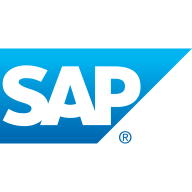

Find out in this report how the two Cloud Data Integration solutions compare in terms of features, pricing, service and support, easy of deployment, and ROI.


| Company Size | Count |
|---|---|
| Small Business | 8 |
| Midsize Enterprise | 3 |
| Large Enterprise | 26 |
| Company Size | Count |
|---|---|
| Small Business | 11 |
| Midsize Enterprise | 5 |
| Large Enterprise | 10 |
The SnapLogic Intelligent Integration Platform uses AI-powered workflows to automate all stages of IT integration projects – design, development, deployment, and maintenance – whether on-premises, in the cloud, or in hybrid environments. The platform’s easy-to-use, self-service interface enables both expert and citizen integrators to manage all application integration, data integration, API management, B2B integration, and data engineering projects on a single, scalable platform. With SnapLogic, organizations can connect all of their enterprise systems quickly and easily to automate business processes, accelerate analytics, and drive transformation.
We monitor all Cloud Data Integration reviews to prevent fraudulent reviews and keep review quality high. We do not post reviews by company employees or direct competitors. We validate each review for authenticity via cross-reference with LinkedIn, and personal follow-up with the reviewer when necessary.